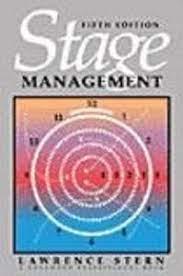Question
Read the following practice scenario (HighCapacity Metropolitan Train MockUp Project). Using the provided template handout, complete the risk register template. HighCapacity Metropolitan Train MockUp Project
- Read the following practice scenario (HighCapacity Metropolitan Train MockUp Project).
- Using the provided template handout, complete the risk register template.
HighCapacity Metropolitan Train MockUp Project
A Chinese engineering company has been awarded a contract to manufacture new highcapacity metropolitan trains (HCMTs) for the metropolitan railway system in an Australian state.
Part of the contract included the fabrication of a fullsize mockup of the train superstructure (for example, without the underframe and wheels) to be made available to the state client for review and used for inspection by the public; rail personnel; disability groups; fire, police, and ambulance authorities; and other interested parties.
The completed mockup was transported to a city location and placed on display to the public for two weeks. As part of the review process, a survey was conducted by the state government to gather opinions about the features intended for the new HCMT. After the public display ended, the mockup was taken to a state railway engineering and maintenance facility close to the city and stored there for possible further use in maintenance and training.
The mockup project was treated as a subcontract, and this was awarded to an Australian company that is a division of a Chinese multinational transport engineering company. The parent company has other branches in the USA, Europe, and Asia.
The train mockup project was valued at about AU $1million. Subcontract conditions imposed by the state government included requirements to have at least 35% of this value undertaken within the state.
Essentially this was an assembly and fittingout project undertaken over three months, using components manufactured in China and shipped progressively to Australia over that period in shipping containers.
Apart from time and quality objectives, the subcontractor's main objective is to build relationships with the key stakeholders, in the interests of obtaining future work. Profit was therefore not a primary aim for the project.
The Australian subcontractor does not operate a formal risk management system but does comply with prescribed state and federal requirements for matters such as safety and the environment. It also has ISO 9001 compliance for quality assurance.
In undertaking this project, the subcontractor knew from previous experience that the quality of the imported components constituted a large area of risk uncertainty, with the main problem being quality inconsistency. Because of the project's size, multinational project workload, budget, and limited time frame, fine detail could have been overlooked by the main contractor who might also have been unwilling to question specifications to improve component quality for what it probably considered a relatively minor project.
Also, while modifications could be proposed, reviewed, and approved (as change requests), the circularity of this process around the various stakeholders was quite protracted. Transport logistics also meant that, by the time manufacturing specifications were modified and approved, affected but unmodified components might already be at various points in the shipping chain (for example, crated at the factory awaiting delivery to the Chinese port, at the docks for loading, on the high seas, being unloaded in Australia, on road transport to the subcontractor, or being unpacked at the company's premises). The subcontracting company had no clear strategy to mitigate this risk proactively, and reactive measures such as site modification often became necessary. The prospect of incurring liquidated damages for any project delay exacerbated this risk, and the subcontractor was very much aware of its relationship-building objective.
Risk knowledge capture, in terms of lessons learned, is fragmented in the Australian subcontractor's organization, and is not helped by a silo knowledge culture existing among the divisions of the parent company, in that communication does not always work well between them. Information and engineering knowledge are not fully shared. Despite the development of business relationships being a common objective for all divisions, senior management fear the potential loss of valuable intellectual property (IP) through becoming indirectly involved with the Chinese main contractor through the Australian partner.
| Project (threat) risk management system (RMS) template | |||||||||||||||
| Organisation | Key | Key | Key | ||||||||||||
| Project | Rare = 1 | Insignificant = 1 | Negligible | ||||||||||||
| Unlikely = 2 | Minor = 2 | Low | |||||||||||||
| Moderate = 3 | Moderate = 3 | Medium | |||||||||||||
| Likely = 4 | Major = 4 | High | |||||||||||||
| Almost certain = 5 | Catastrophic = 5 | Extreme | |||||||||||||
| Note: Scale intervals must be defined for the RMS owner. | |||||||||||||||
| Risk Identification | Risk Analysis | ||||||||||||||
| No. | Objective (or task/technology/resource/organisation) | Identified risk (risk statement) | Risk Category | Likelihood (1-5) | Impact (1-5 ) | Quantitative.analysis (calculate severity from objective likelihood and impact data) | Severity use code table | ||||||||
| 001 | delay in the deleivery of materials | transport risk | |||||||||||||
| 002 | |||||||||||||||
| 003 | |||||||||||||||
| 004 | |||||||||||||||
| 005 | |||||||||||||||
| 006 | |||||||||||||||
| 007 | |||||||||||||||
| 008 | |||||||||||||||
| 009 | |||||||||||||||
| 010 | |||||||||||||||
| Etc. | |||||||||||||||
Step by Step Solution
There are 3 Steps involved in it
Step: 1

Get Instant Access to Expert-Tailored Solutions
See step-by-step solutions with expert insights and AI powered tools for academic success
Step: 2

Step: 3

Ace Your Homework with AI
Get the answers you need in no time with our AI-driven, step-by-step assistance
Get Started


